Contact Details of Wicklow Gaol.
Kilmartin Hill,
Wicklow Town,
County Wicklow.
Phone – 00353 (0)404 61599
E-mail – info@wicklowhistoricgaol.com
Website – www.wicklowhistoricgaol.com
Opening times.
Open Daily – 10.30am – 16.30pm.
For the month of January 11am – 3pm
Pricing
Adult €7.90
Child €5.00
Senior/Student €6.75
Family €20.00
Tour of Wicklow’s Historic Gaol
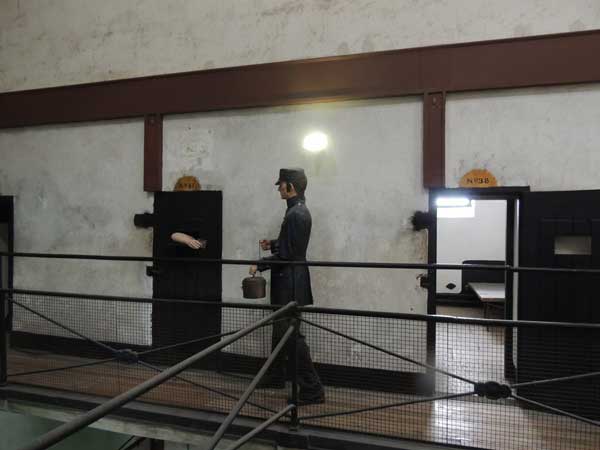
The tour of Wicklow’s Historic Gaol is undertaken by guides, audio guide, interactive exhibits and information boards. You will meet the Matron Mary Morris, explore cells, be lead into the terrifying Dungeon and take a trip on board the prisoner Transportation Ship the HMS Hercules. You will meet The Gaoler and some famous inmates.
Audio Guides are available in French, German, Spanish, Italian and English.
All tours of Wicklow’s Historic Gaol are tailored to fit with the ages of the audience.
Night Tours of Wicklow’s Historic Gaol
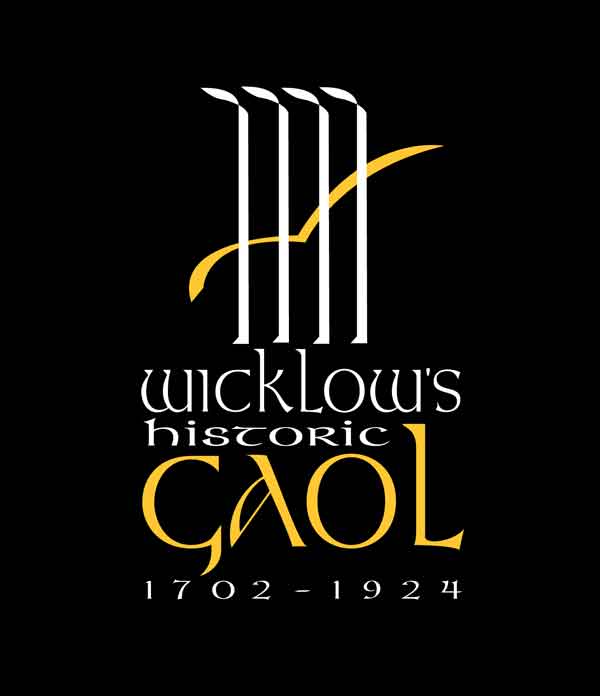
- The Night Tour of Wicklow’s Historic Gaol is an Adults Only Tour.
- €15.00
- You will take a tour of Irelands most haunted building under a cloak of darkness. Witnessing this ominous building, as prisoners would have in an age of cruel torture and death.
- The Night Tour of Wicklow’s Historic Gaol is lead by actors who will not break character.
- If you are brave enough this tour promises to be a historical and frightening experience.
- For more information please visit
Paranormal Investigation.
- €50.00
- All participants on the Paranormal Investigation must be 18 or over and Wicklow’s Historic Gaol operate this tour with a strict no alcohol policy.
- Wicklow Gaol does not allow the use of Ouija Boards or others objects of a similar nature.
- If you have an interest in the supernatural and paranormal, the paranormal investigion night at Wicklow’s Historic Gaol is a must.
- The tour begins at 9pm and finishes in the early hours of the morning between2-3am.
- For more details please visit www.wicklowhistoricgaol.com
Sinead’s Thoughts on Wicklow’s Historic Gaol.
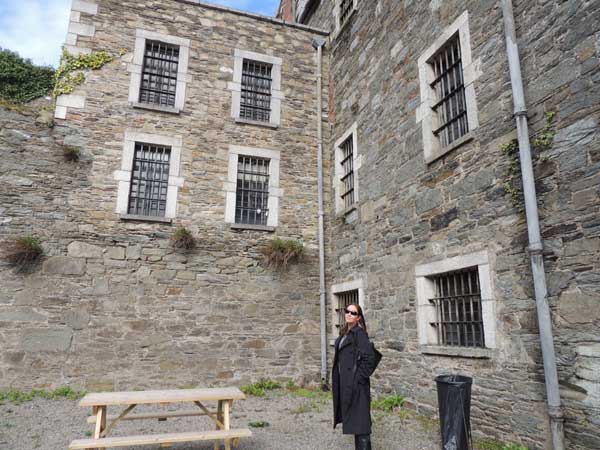
As you drive through the beautiful historic town of Wicklow, it is impossible not to be astounded by the staggering size of Wicklow’s Historic Gaol; it’s high thick stonewalls echoing stories of its long and historic past. The walls seem to whisper of inmates, revolution and those fleeing hunger.
A building with a past filled with sorrow and cruelty but also tells the story of how many of these people shaped our futures. This magnificent structure gives us the opportunity to walk in the footsteps of our sometimes cruel and violent past and allows us to witness the people behind some of Ireland’s most notable historic events.
As I approach the front entrance of Wicklow’s Historic Gaol, I’m struck by the masonry and skill it took to construct this multiphase Gaol.
As you look up you can still see the slightly bent Gallows bar, and it is impossible not to be stuck with a sort of fear that creeps into your bones and gives you an unsettling feeling down your spine. This was the site of executions and looking up at those gallows you wonder who were these people and what they did to meet such a brutal end.

This is a building full of tales of real people and visiting here is walking in their footsteps, these are the cobbles that saw tragic human suffering and stories of real life, somehow stories become more real when you walk through the doors, the heavy original gates looming, I kept expecting them to slam shut behind me.
There is the most wonderful Restaurant within Wicklow Gaol. The Jailer’s Rest Café and Restaurant, that is family friendly with an amazing menu, and fabulous food to suit all tastes. The Gift Shop within Wicklow Gaol is excellent and one of the best gift shops I have seen.
They have something for everyone and in every price range. There are items for sale that are connected with the Gaol and its history.
The Wicklow Gaol gift shop has the best book selection I have seen in many years. There is also a genealogy centre in Wicklow Gaol, that allows visitors to research Ancestors.
Ancestors that may have been imprisoned and or transported from here to foreign lands.
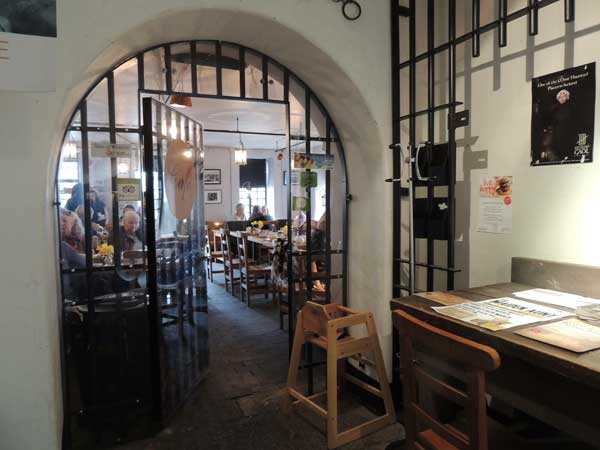
I keep wondering if the walls could talk what would they say, somehow I already knew because in parts of this Gaol the walls seem to bleed with history and tales of the Irish that were subjected to indignities that are beyond any words I have available to me.
I cannot help but think of those who were tortured here and those who were transported to foreign lands, such as The American Colonies and Australia, never to see their homeland again. They say that walking through these gates is like walking through The Gates of Hell.
As many that walked through them never came out again. Walking into this building is walking into history, it is a gift to be allowed explore some of the darkest times of our history, walking through these gates is walking in the footsteps of 1000’s of people, all with their own stories and very individual reasons for why they ended up incarcerated within the walls of Wicklow Gaol.
You will be greeted by wonderful and friendly staff dressed in period costumes that will introduce you to the Gaol and give you directions on how to work your audio guide for the tour ahead.
Take advantage of all the information available to you. In a room next to the reception you will find an interactive video system on the history of the Gaol, I found this very helpful in understanding the chronology of this historic site.
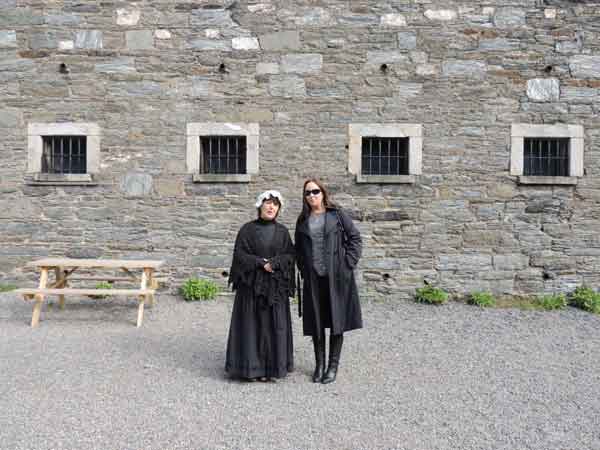
You will meet interesting characters, pay close attention to what they say, you will need this information as you delve further into the bowels of this building. I was fortunate enough to meet the Goal’s Matron Mary Morris. You will learn that this is a multiphase building, with many phases of construction and expansion.
The original Gaol was constructed in 1702. It was originally built to house those who broke the extremely harsh Penal Laws that were brought into being under British Rule in Ireland.
These laws were aimed to control the Catholic Irish and other Denominations other then Anglican.
As you start your tour you will be guided into the dark corridors of the Gaol and down a set of winding steps into one of the Prison Yards. I was struck by the height and thickness of the walls and the frightening thread wheel in the corner of the yard.
You will learn that men, women and children were housed in this Gaol together, with little or no sanitation and very little food.
Many of those incarcerated for petty crimes were housed with the worst criminals of the time, with men, women and children, living with convicted rapists, murderers and the criminally insane. It must have been like hell on earth.
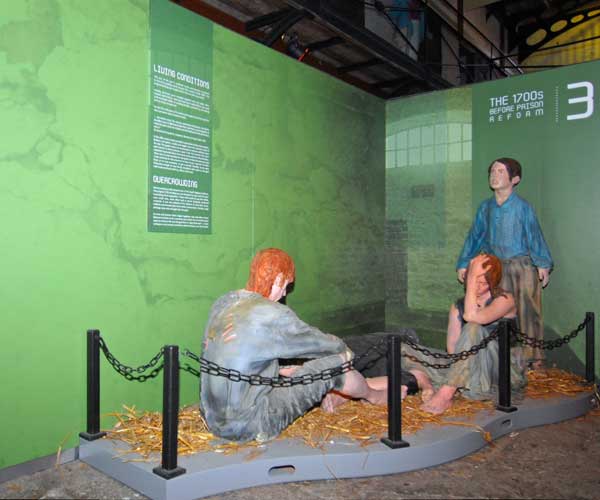
Many incarcerated for crimes that by today’s standards would seem ridiculous. Sleeping on straw, on cold stone floors in crowded tiny cells. As you enter the ground floor of the Gaol, you will enter what was the schoolroom.
I cannot help but imagine the unfortunate children that were forced to live here, many of whom would have been born and raised here, with no knowledge of the outside world. The original floors beneath my feet, floors that would have witnessed so many horrors.
As I entered the main cellblock on the tour, I’m overcome by emotions, It is impossible not to imagine what life was like within these walls. Many cells are open and have interactive exhibits telling you about the inmates that once resided here.
The horrific conditions that they endured plain to see. For me I was struck by the lack of real crime, as we would see it today. Many inmates were convicted of crimes of survival, especially during The Great Famine, to have to come here or starve to death, was often the only way they could survive.
The Rebels of the 1978 Rebellion are a major feature, with notable names from the history books appearing as residents of Wicklow Gaol, such as Billy Burke and Napper Tandy. As I delved down into the Dungeon, I was terrified, knowing that this was the site of historical torture, the walls screaming of the past and so many injustices that were inflected upon the Irish in Dark Times.
The solitary confinement cell and chains still in place, I couldn’t help but want to know more about the people who lived and died at the hands of some extraordinarily barbaric Gaoler.
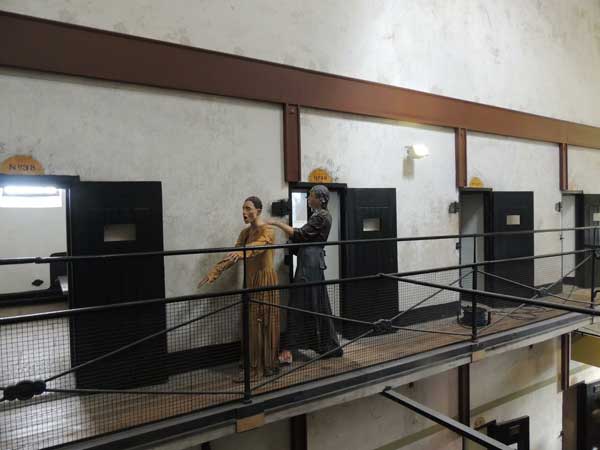
Those that were executed, and the crimes they committed to warrant a death at the hands of a executioner, many praying they would be lucky enough to receive a skilled executioner and a speedy death.
There is a story that those who were hung, and their heads were left on the rope for a hawk that resided in the Gaol to devour, eventually one of the prisoners killed and ate the creature.
Walking through the levels of this Historic building you are guided through history, experiencing the sights and sounds that would have been heard by former inmates.
You will see school rooms, learn about medical treatments though many historical eras of the Gaol and step aboard HMS Hercules the transportation ship.
For me the brutal honestly of this building is terrifying. To see history as it really was, filled with the cold hard realities of a time when life was full of darkness.
Wicklow Gaol allows us to clearly learn from the past and insures our history is never forgotten.
The raw honesty is a breath of fresh air, the knowledge that Wicklow goal offers is something that cannot be experienced anywhere else.
In order to understand the magnitude of the history behind Wicklow Gaol, you are given the privilege of being able to walk through it.
You are in the company of both the heroes and villains who were housed here and for me it is safe to say that some never left. Wicklow Gaol is known as one of Irelands most haunted buildings and for me, there is no doubt in my mind that once some people entered inside these walls, they certainly never left.
I cannot offer you any evidence only a deep feeling I got in certain areas of the Gaol, in one cell in particular and on the ground floor, I have never experienced anything like it.
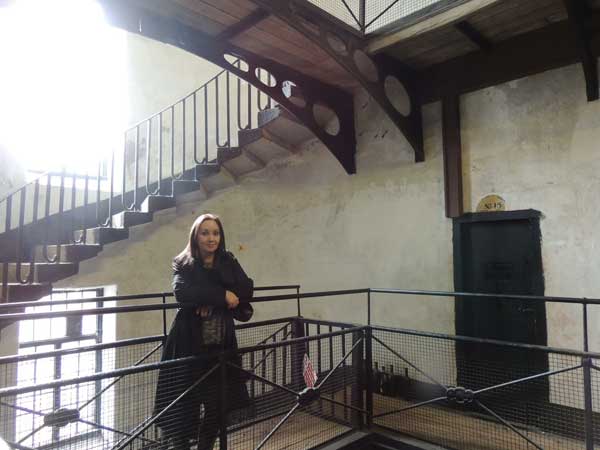
As I walked the corridors I got the feeling that somewhere, in an unusual way I wasn’t alone, that there was always someone watching.
Wicklow’s Historic Gaol is one of the most wonderful experiences I have had and if you are in the area put this at the top of your list, I can promise you wont regret it.
It is one of Irelands Historical Gems and I personally cannot wait to go back. I would like to thank the wonderful staff of Wicklow Gaol for welcoming us and for being so helpful, you were all truly amazing.
It was wonderful to see such committed staff that truly love this building, who preserve our history for future generations and make every tour a special and unforgettable experience for visitors
A History of Wicklow’s Historic Gaol.
Wicklow Gaol in its original form was constructed in 1702. The Gentry of Wicklow, who each paid £5 towards its construction, paid for this new Gaol. Wicklow Gaol was built to replace a much older Gaol that stood in the Abbey Grounds, which was no longer secure and in a bad state of disrepair.
The Goal was designed to hold prisoners who had committed any type of crime and most notably those who broke the extremely harsh Penal Laws that were inflicted upon Irish Catholics and other denominations that were not Anglican Church of Ireland.
Conditions in the Gaol were harsh and under the supervision of The Gaoler, who controlled all aspects of the Gaol and was open to bribery. He was in control of all aspects of prisoner’s lives, food, bedding and any other needs that they many have had.
The Gaol at that time was a large room, which housed men, women and children, all living together. Condemned prisoners where held in the basement.

The Gaoler even controlled prisoners exit from the Gaol, they could not leave unless they paid the Gaoler. Many were subjected to cruel torture at the hands of the Gaolers. Prisoners that died or those that were executed were often thrown in the sea.
Gaol fever was common and many died with no medical treatment. With Prison Reform life improved in the Gaol, with new building works and sanitation, as well as education and medical treatment.
Wicklow Gaol had a long history of torture, which also improved with the coming of Prison Reform.
Wicklow Gaol saw many eras in Irish History including The Penal Laws, Transportation, 1798 Rebellion, The Great Famine, Prison Reform, The War of Independence, and The Civil War.
Transportation from Wicklow Gaol.
On your tour of Wicklow’s Historic Gaol you will find a scale model within the Gaol, of the deck of the HMS Hercules.
She was a convict ship used to transport prisoners to Australia. Convicts were transported from Wicklow Gaol by ship, usually for political crimes. Including 100s of Rebels from the 1798 Rebellion, those included Michael Dwyer and General Joseph Holt.
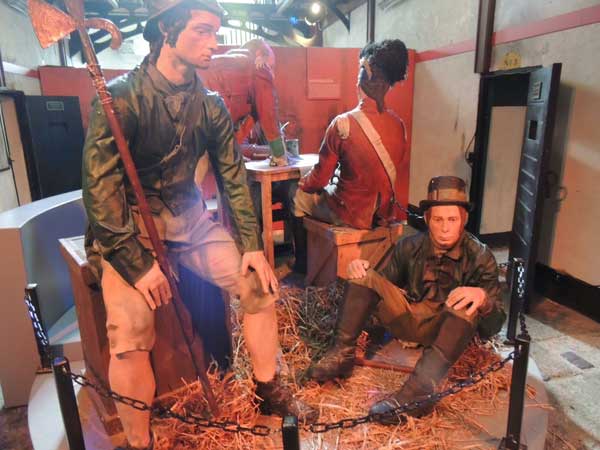
It is important to note that anyone could be transported, even for petty crimes. Stealing or being homeless was often the only reason needed for Transportation. Prostitutes were also subject to Transportation.
All being sent to Australia or other new lands, including American, Canada, Tasmania and The Caribbean They would serve out their sentences and some made good lives for themselves in their new homes, that’s if they survived the voyage, the voyage to Australia could take up to 6 months in horrendous conditions.
For the authorities is was helpful in freeing up prison space and avoided Rebels from gathering sympathy at home.
The 1798 Rebellion and Wicklow Gaol.
The 1798 Rebellion in Wicklow saw differing degrees of Rebel activity. With most action occurring in the South of the County, specifically the Battle of Arklow, where rebel forces from County Wexford attempted to take control of Arklow, away from British Forces, but this attempt was unsuccessful.
Other famous rebel assaults in Wicklow included the Battle of Newtown Mount Kennedy.
The Rebel Forces in Wicklow had more successes with their employment of Guerilla warfare against British Forces. These lightening attacks were carried out from areas within the Wicklow Mountains.
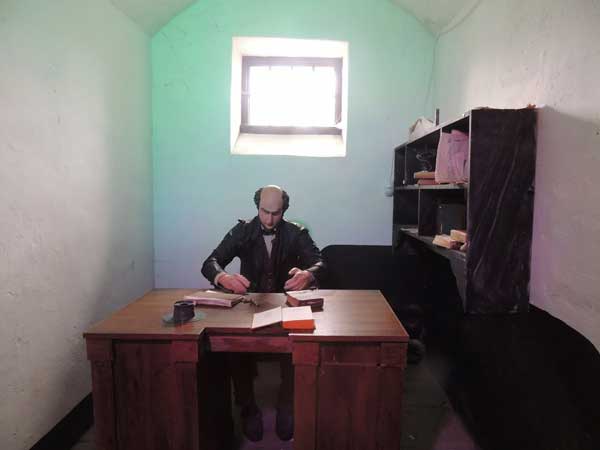
Wicklow Gaol saw many Rebels incarcerated within its walls. Many of these Rebels were executed and there bodies were dumped at sea by fishing boats. Notable inmates of Wicklow Gaol were General Joseph Holt and Michael Dwyer.
The Rebellion of 1798 left deep scars and the Rebels were honored as heroes, famous sites and locations connected to important events within the Rebellion became sites of historical significance.
The 1798 rebellion resulted in amounts of prisoners being incarcerated in Wicklow Gaol.
These large numbers had an impact on the structure, with the Inspector General concerned that walls had become unstable.
A new building expansion was completed in 1820; The Gaol was expanded again in 1843 to form the structure that we see today.
William ‘Billy’ Byrne.
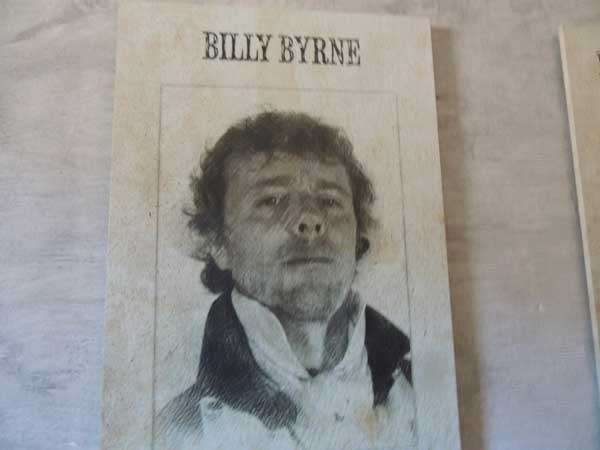
Billy Byrne is one of Wicklow Goals most famous inmates. He was a Rebel leader from Ballymanus, Co Wicklow. Byrne famously lead many attacks against British Forces.
He was eventually arrested and tried. He was convicted and sentenced to die at the Gallows. Byrne was held in Wicklow Gaol before his execution, on Friar’s Hill.
Billy Byrne was immortalized in a traditional Irish Song, which holds his name. There is a statue in Market Square, Wicklow Town, honoring Billy Byrne and the role he played during the 1798 Rebellion.
James ‘Napper’ Tandy.
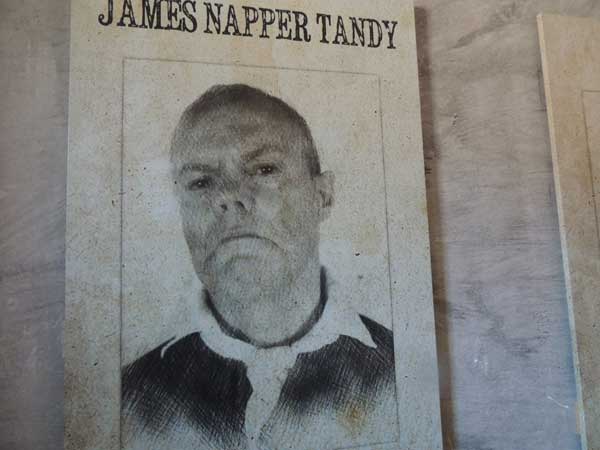
Napper Tandy was a co-founder of the United Irishmen and was originally a shopkeeper from Dublin. During the 1798 Rebellion he and a small group of fighting men landed in a French ship in County Donegal.
Tandy was eventually arrested and tried for the crime of Treason in 1891, and was found guilty.
However his life was spared as his links to French Revolutionary Forces was strong, and Napoleon opened up negotiations with the British to bargain for his life and his safe return to France.
Napper was held at Wicklow Gaol until he was returned to France. He was a very popular prisoner and hailed as a hero among inmates. This resulted in Napper having a pretty nice stay at Wicklow Gaol as he was treated extremely well.
The Great Famine at Wicklow Gaol
The Great Famine also saw a massive increase in Crime. The Crimes were mainly crimes against property, including the stealing of cattle and food. They were Crimes of survival. Many were imprisoned due to these crimes, some choosing to commit crimes in order to be sent to Gaol.
Being sent to Gaol was a way to avoid starvation, as harsh and crowded as the Gaol conditions were, they were guaranteed to receive food. Conditions in Wicklow Gaol at this time were shocking.
In Wicklow Gaol nearly 800 prisoners were packed into 77 cells. Disease was a major issue, as was the disposal of bodies.
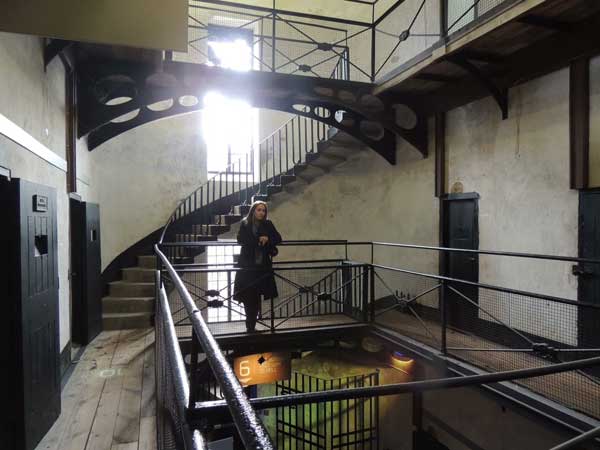
Wicklow Gaol and Prison Reform.
In a period during the 18th Century, which is sometimes called the Age of Enlightenment, some academic groups within society sought to reform many aspects of society and that included the treatment and reform of prisoners. The use of torture was replaced with hard labour and what were seen as more humane punishments.
The Gaoler was replaced with a government official who was to be known as the Governor and he would be responsible for all that happened within the prison, including the welfare of prisoners.
The Governor would be bound to rules, such as he would not take bribes or torture prisoners, as well as having to compile monthly reports. Staff would be paid a good wage and the government paid for the prisoners’ upkeep.
Wicklow Goal’s first governor was Edward Storey who later married Mary Morris who was the Gaol’s Matron. Mary Morris strove to improve the lives of women and children who were in Wicklow Gaol.
The Early 20th Century.
Wicklow Gaol was closed in 1900 but had to reopen to hold Prisoners connected with the War of Independence and the Irish Civil War. During the Early part of the 20th Century, Ireland was covered in a cloak of civil unrest and saw mass revolutionary movements.
Possibly one of the most famous events in Irish History was the 1916 Easter Rising. With the British occupied by the First World War, Irish nationalists saw an opportunity to stage an uprising against British Rule in Ireland.
It is important to note that many Irish people shared a belief in Irish Independence from British Rule but were not willing to take up arms and fight.
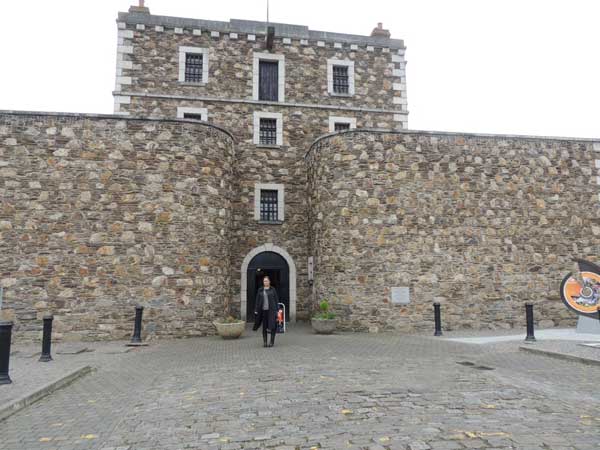
The Rebels of 1916 did not have the numbers or weaponry to mount a completely successful rebellion but did mount an attack in Dublin and other areas. They were put down easily by the British Forces and all Rebel leaders were round up and tried.
100’s were incarcerated and 16 major leaders were executed. The execution of the leaders inspired people to fight for their cause; this time is known as the War of Independence. It is when we see the establishment of The Irish Republican Army.
The Irish Civil War took place after The War of Independence. After the Irish had won the establishment of The Irish Free States, the peace treaty that was agreed upon, divided the county into pro and anti treaty groups, resulting in a Civil War.
Wicklow Gaol was put into use as Irish Free State supporters imprisoned anti treaty supporters within the Gaol. Wicklow Gaol saw a man called Erskine Childers imprisoned within its walls. He was the father of Irelands future 4th President.
Paranormal Activity in Wicklow’s Historic Gaol.
Whether you believe in the paranormal and supernatural, or not, there is no denying Wicklow Goal’s ominous and brutal past.
Some think that a building such as this with its long history and the brutality that took place within it walls, holds onto energies and that some inmates were sentenced to spend an eternity walking these corridors.
Over the years Wicklow Gaol has been the site of paranormal activity that has occurred in many different areas of the Gaol.
There have been reports of a man walking in front of the bars of the holding cell on the ground floor.

A woman in a long black cloak has been seen on the ground floor. There have been reports of people feeling sick in some cells and strange smells coming from Cell 5.
There is a mist that seems to float through the main Cell Block. There have been reports of a man standing on board the ship. With countless reports of shadows, movement in the corners of your eyes and uneasy feelings. There have also been reports of people hearing children crying.
Many paranormal experts have also visited Wicklow Gaol. A team from Ghost Hunters International visited Wicklow’s Historic Gaol in 2009 and concluded that there was indeed evidence of paranormal activity within the walls of Wicklow’s Historic Gaol.
Wicklow’s Historic Gaol new beginnings.
Wicklow Gaol was closed for the last time in 1924 and did not reopen as a prison. It eventually became a store for Wicklow County Council. In 1954 parts of Wicklow Gaol were demolished, as there were no parties interested in caring for this dramatic historical site. During the 1980’s Wicklow Gaol finally received the recognition it deserves and was recognized for its Historic importance.
Hence Wicklow’s Historic Gaol received the attention it needed to preserve this site which is full of cultural and historic significance In 1995 Wicklow Gaol opened its gates again but this time as a museum, and heritage attraction. Standing as a monument to our past rebel leaders and important eras in Irelands history. Wicklow Gaol tells the stories of Ireland with brutal honesty and frankness, and holds those stories in safe keeping for future generations.

